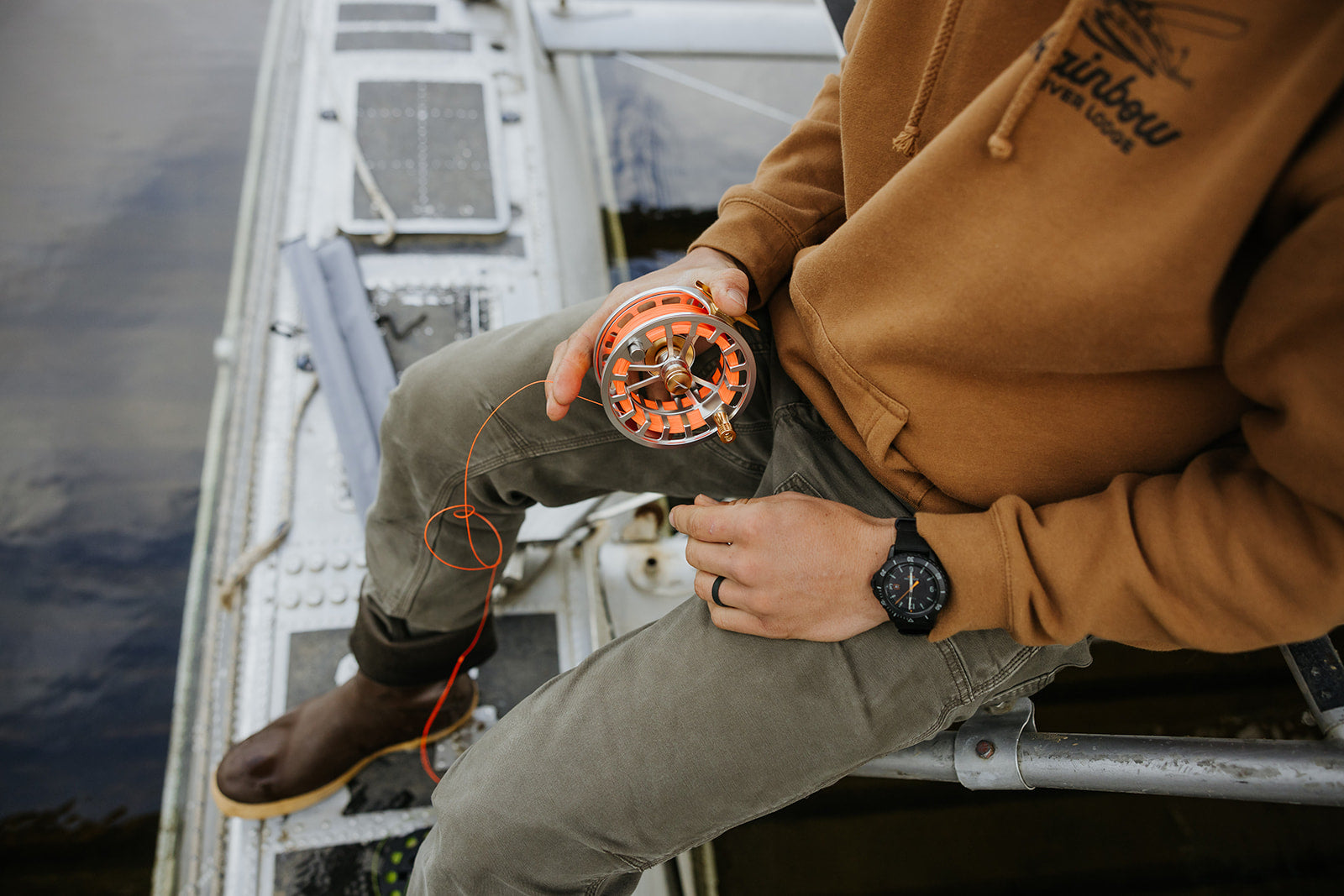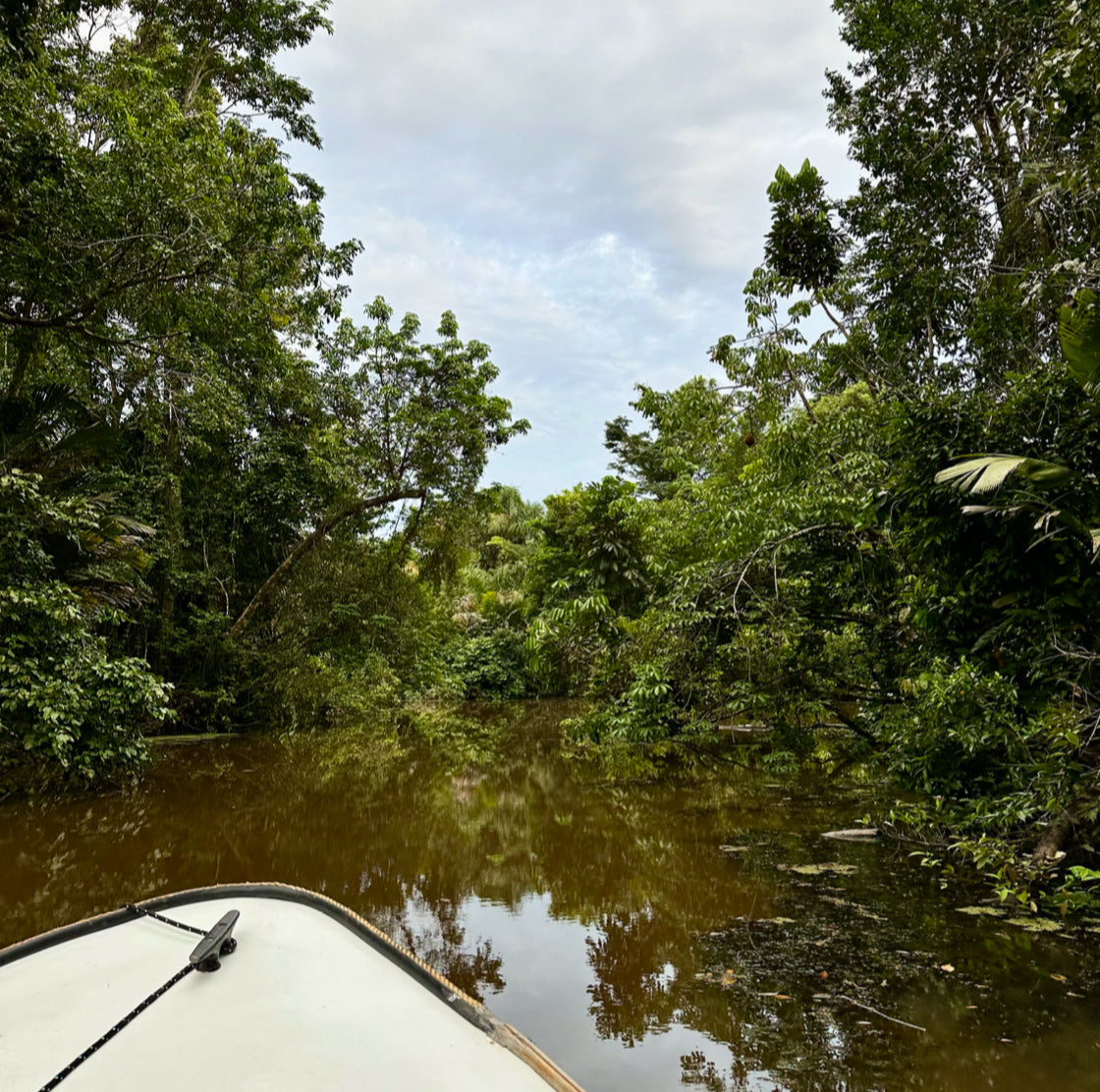Article Written by Nick Curcione. Learn More About the Author Below / Article Read Time 4 Minutes
Conduct a search of the fly- fishing literature down through the ages and you’ll be hard pressed to find a single article written on the subject of backing for one’s reel. I’m sure there’s a good reason for this lack of attention. First off, it’s a topic that probably doesn’t score on most angler’s interest list. Secondly, and this merits more consideration, backing is a component of one’s tackle repertoire that once applied is simply forgotten about. Compare this to another tackle item like your rod for example which constantly commands your attention. It’s the most physical element in the fly -fishing process and seeing how it performs is immediately evident every time you execute a stroke. A close second here is the reel because it comes into play when you strip out line, when you retrieve it, and most exciting of all, when a fish makes a run, and line starts to rocket through the rod guides to a point where it actually begins disappearing from the spool.

It’s this latter experience that serves as a major demarcation point that distinguishes many forms of saltwater fly fishing from its freshwater counterpart. Perhaps with the exception of salmon and steelhead and some exotic species from far off locales, most fish that freshwater fly fishers typically encounter are not what you would refer to as line burners and the reel seldom comes into play in the process of subduing fish. In most scenarios, hand stripping line is all that is necessary. As an example of my own experience in this regard, in three years of fishing giant northern pike in Saskatchewan, I recall only one instance where a fish took me into my backing. The standing joke among many of the freshwater buffs I’ve known over the years is that the only time they see their backing is when they spool it on the reel for the first time. They put it on and largely forget about it from that point on. That may be so for many saltwater fly fishers as well and explains why the subject of fly line backing is seldom an issue that stimulates much consideration.

Leaders and fly lines of course are a different story and garner a great deal of attention. The types of fly lines to use, their tapers, their densities, and the dynamics of leader construction are topics of endless discussion. But when a fish does get into your backing the hard fact is that at this stage, in conjunction with the leader and fly line, this last of section of line is a vital part of the connection between you the angler and whatever it is that chose to take your fly. I experienced this seemingly obvious fact many years back when I was locked in a tug of war with a giant yellowfin tuna. I saw the fish take the fly and from years of experience fishing these brutes on San Diego based long range trips with heavy conventional stand-up tackle, I estimated the fish to be close to the 100-pound mark. I was on this yellowfin for more than four hours and began to make minute progress trying to battle it back from the depths. Suddenly and unexpectedly, everything went slack. The backing broke and I never figured out why, it was brand new, I was in open water with no structure, and it parted just a few inches up from the reel’s spool. My only guess is that there was some sort of defect in its manufacture (I’m not going to mention the brand, but it wasn’t a Cortland line). From that time on I began paying a lot more attention to the backing on my reels.

Cortland braiders at work making Micron Backing
For probably the better part of 40-years I’ve been using Cortland Micron in 30-pound test on all my fly reels and have never experienced any problems. Some may question the use of 30-pound when targeting big fish that start topping the 50-mark, but it makes sense when you think about the weak link principle. Many years ago, fly lines with 50-pound test break strengths were not being manufactured and if your class tippet did not exceed 20-pound test, that would represent the weak link in your line system, and you didn’t have to worry about breaking off a fly line. I would guess that most fly lines didn’t exceed 30-pound test break strength and ideally if anything breaks you want it to be confined to the class tippet. I abide by that principle even today with the availability of big game lines with 50-pound test cores like Cortland’s 50+series. I know some offshore aficionados who fish with straight 60-pound leaders, but they do so at the risk of losing a fly line if things go wrong. Fly rods can also be needlessly broken if you choose to go this route.

Color variations of Micron Backing
Back in the day there wasn’t a whole lot to choose from when shopping for backing but all that has changed with the advent of high tensile strength small diameter lines like Cortland’s Gel Spun and their Spliceable Hollow-X backing. I have confidently fished both, but the latter is my personal preference. Due its relatively small diameter you’ll be able to pile on the yardage with gel spun. If you deem that critical to the type of fishing you engage in gel spun will serve you well. There is something to be aware of though and it has to do with the way in which this line is spooled on your reel. It’s important to be sure that the line is wound on the reel’s spool under considerable tension to ensure that it’s nice and tight. Because of its small diameter if the line is loosely packed on the reel, it will tend to become buried under the wraps and won’t easily pull away under pressure. For this reason, it’s best to have the gel spun wound on with an electric line winder like the ones you find in tackle shops. This is not really an issue with the braided Hollow-X line which is now my go to line for fly reel backing.

Regardless of the type I use a uni knot to fasten the backing to the spool’s arbor. I like to connect the tag end of the backing to the fly line or running line if you’re using a shooting head setup with a loop-to-loop configuration. To switch fly lines all you do is disconnect the loops, you don’t have to cut either the backing or the fly line. Just be sure to make the backing loop large enough to pass a reel through. There are several knots you can use to fashion an end loop in the backing, I like using a double bimini because it yields a four-strand loop which makes for a nice secure interlocking loop connection with the fly line. If you are averse to tying the bimini, a simple four-turn surgeons loop folded over itself will also work nicely.
Following these simple suggestions all that’s left to do is to get yourself in an encounter with a strong pulling adversary that will make your backing plainly visible as it rips out through your guides.

About the Author
In addition to his former 35-year career as a university professor, Nick is an internationally recognized outdoor writer, instructor, lecturer and tackle consultant with a lifetime of angling experience. He is truly an ambassador for sport of fly fishing. Nick is especially noted for his casting expertise and instructional clinics and is one of the country’s leading authorities on sinking lines and shooting heads. He is recognized as one of the pioneers in the use of double-handed rods in saltwater. In 2011 he received the IFFF Silver King award for his contributions to saltwater fly-fishing.
Nick has been on the sport fishing show circuit for more than 40 years, where he has been a featured attraction for productions like the International Sportsmen Expositions, The Great Western Fishing and Hunting Shows, Marriott’s Fly- Fishing Fairs, the Shallow Water Expositions and The Fly-Fishing Show.
His fishing travels have taken him to a variety of locales, including all the coastal waters of the continental U.S., Alaska, Canada, the Caribbean, Mexico, Central and South America, New Guinea and the South Pacific.
His writing credits have been extensive, with numerous articles in local, national and international publications. He has authored four fly fishing books, The Orvis Guide to Saltwater Fly Fishing, Baja on The Fly, Tug-O-War, A Fly Fishers Game and The Saltwater Edge.
Over the years Nick has served as a consultant for several major tackle companies and is currently working with Cortland Line and Thomas and Thomas fly rods.



